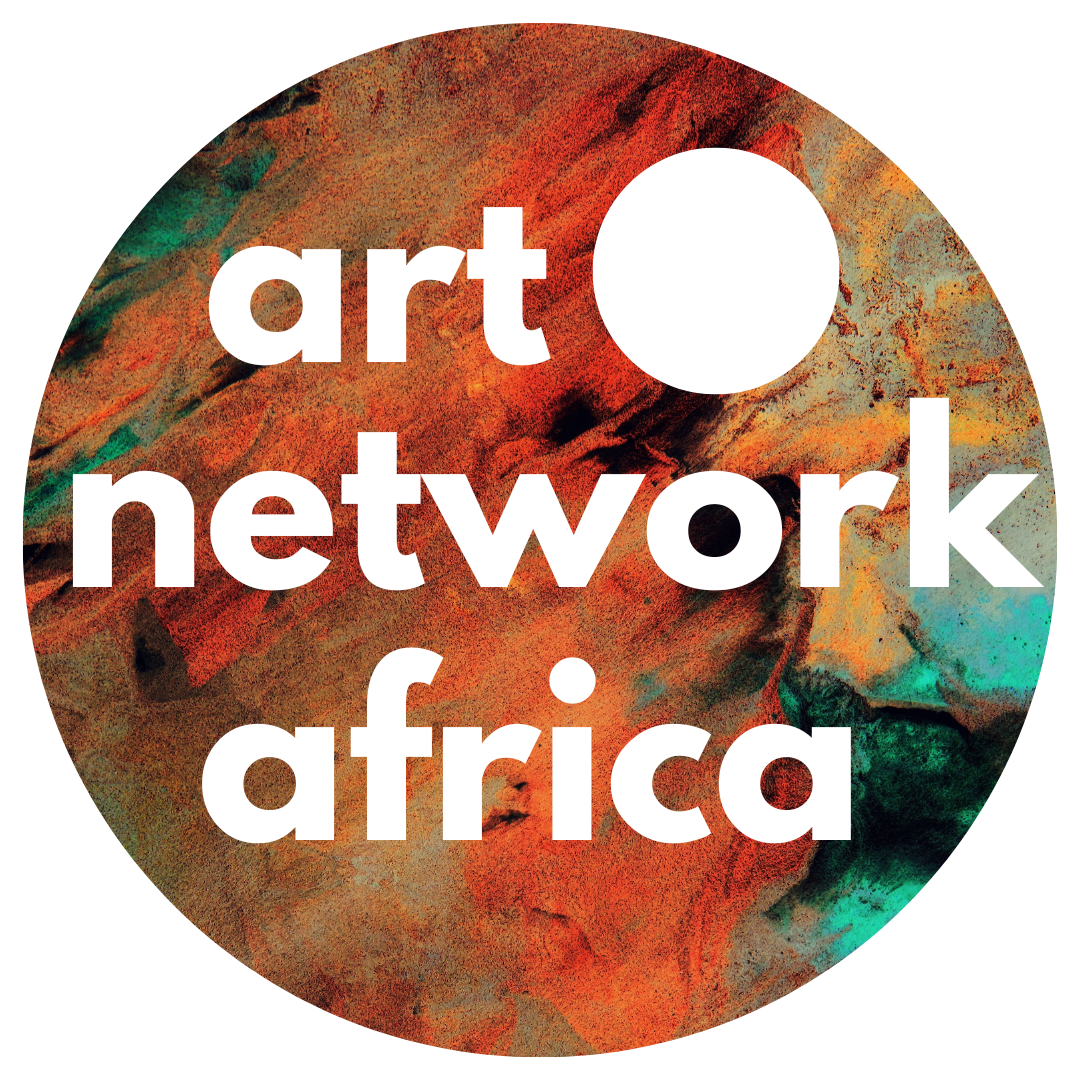Emmanuel Idowu, the 2023 Absa L’Atelier Ambassador, brings his solo exhibition Echoes of Innocence to Alliance Française. The show reflects on how childhood memories shape personal identity. Using symbolic imagery such as ropes, books, and baskets as well as drawing inspiration from Yoruba folklore, Idowu explores themes of childhood, identity, and time.
The exhibition opening welcomed several notable guests, including the Director of Alliance Française de Lagos, Marc Brebat; Absa Chairman, Adedotun Sulaiman; and Absa’s Senior Specialist, Art and Museum Curator, Dr. Paul Bayliss, along with many others.
Originally from Osun and raised in Ondo, Idowu developed his signature pointillist style while studying painting at Adeyemi Federal University. His work weaves together memory and Yoruba tradition, earning him recognition and a place in prominent collections across Africa and beyond.
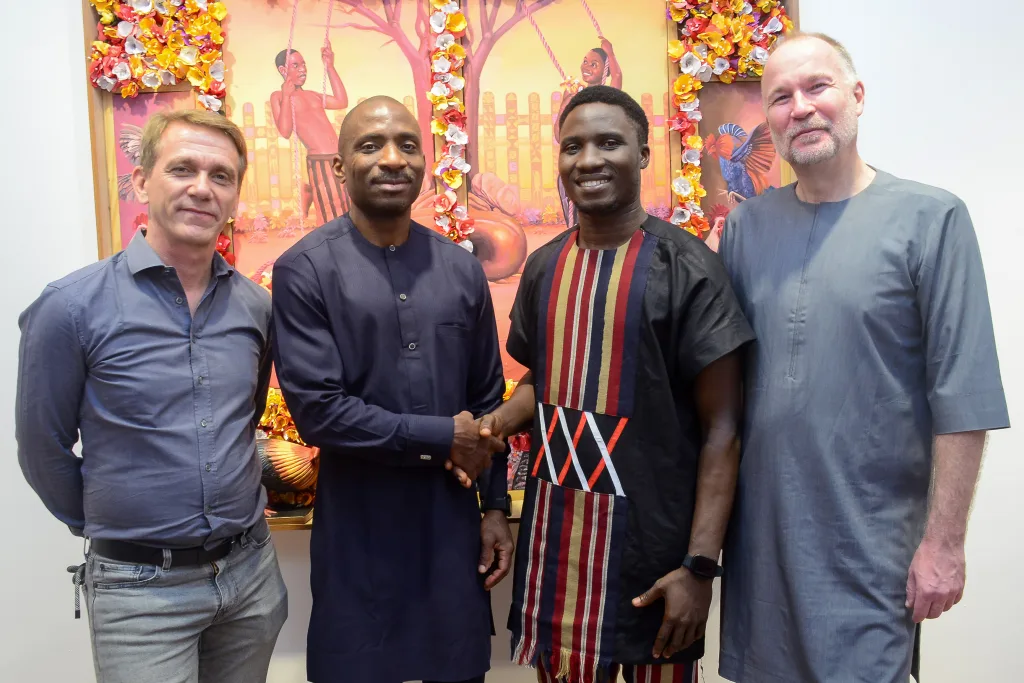
D.C: How has your ambassadorship with Absa shaped your artistic journey over the years?
E.I: It’s really been transformative. Absa played a huge role in shaping who I am today as an artist. It really built me and brought the best out of me. Winning the Absa Award was a turning point, but it also came with a the pressure of doing the right thing. I kept asking myself: What’s next? Can I live up to this?
But Absa grounded me. They reminded me that I could always go further, do more, be better than I thought possible. I truly thank God for the journey. Through the program, I was introduced to the deep history of the black race, the South African people-their stories and struggles. I also received a mentor, Mr. Ibe Ananaba, who took me on an incredible creative journey. I studied his work, engaged deeply with his process. He is someone I cannot have easy access to, but Absa helped me meet him and pass through a learning process under him. That experience helped me grow not just as an artist, but as a thinker.
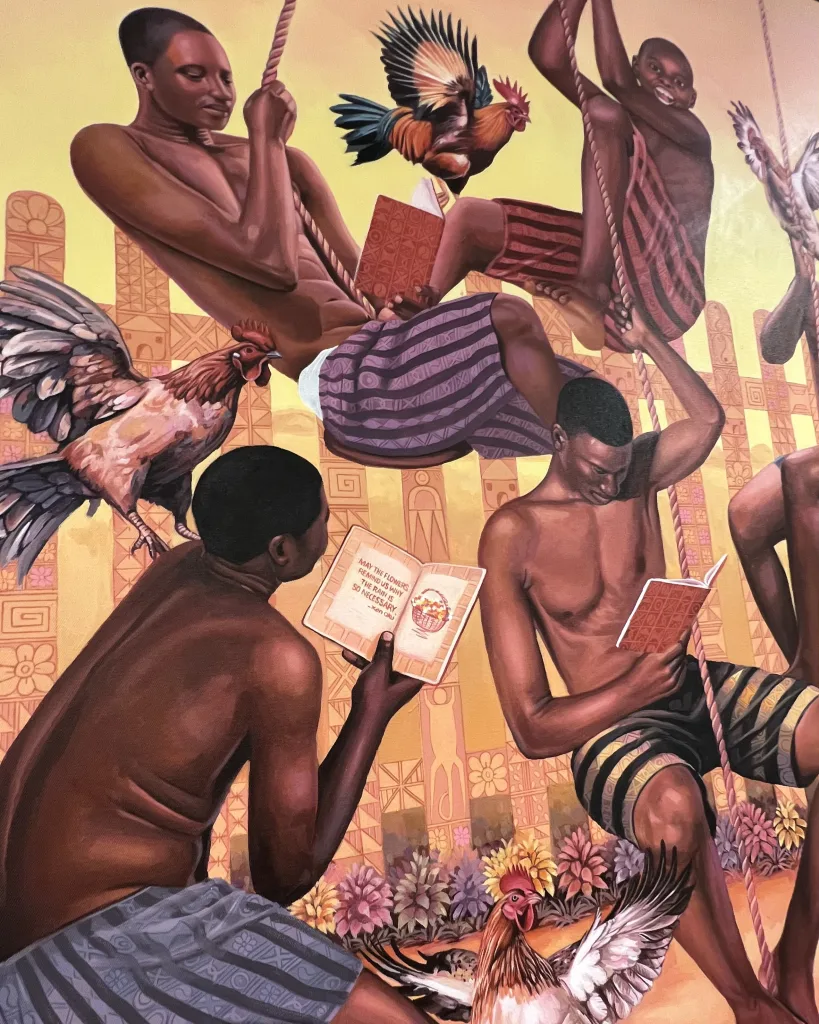

D.C: The works you’re showing in this exhibition have a very distinct color scheme. Can you tell us more about that?
E.I: Absolutely. The color scheme reflect an evening setting in a Yoruba location. It illustrates children playing after school, which is a common thing because when you go to school, you don’t play in the morning, you play in the evening.That twilight mood sets in, when the day’s work ends and imagination and play take over.
You’ll see tones like pink, red, light gray, and yellow. These colors are intentional. They suggest moonlight, that magical time when memories are made. Interestingly, these pieces were also inspired by a South African poem titled “The Boy on His Swing” by Oswald Mbuyiseni Mtshali. This idea came while I visited South Africa. Though I first encountered that poem in Nigeria while preparing for my WASSCE and NECO exams. It was part of the curriculum.
I have always wanted to create paintrings related to it but the vision is not clear. during my time with Absa – my professional and master sessionsI realized ideas can come from anywhere.You don’t always need to stress yourself searching for it. You might have learned it long ago. So if that is the case, I should be able to reflect to what I have learnt and bring it to limelight. That’s what this body of work does: it brings the past into the present, and invites viewers to do the same to reflect on their own memories of the past, journey and their own innocence.
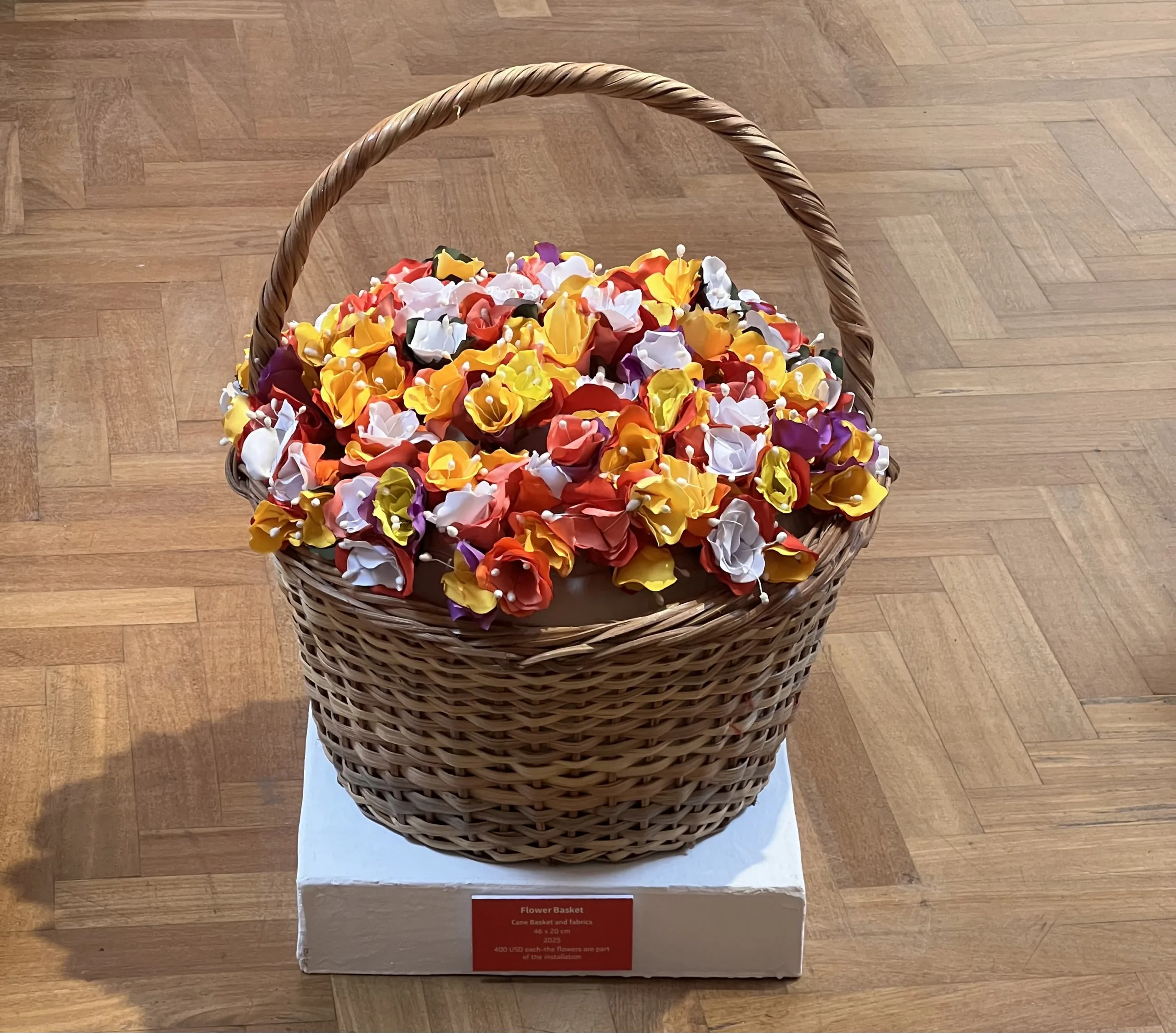
D.C: The exhibition is titled Echoes of Innocence. Would you say personal experience shapes it?
E.I: Very much so. Echoes of Innocence explores nostalgia andchildhood memories, especially those early moments of discovery, freedom, and play.
These were days of my innocence when I was full of life and curiosity, unaware of the weight of the world. Now as an adult, looking back, I ask myself: How did I move through life so freely then? That sense of wonder is something I try to carry into my work today.
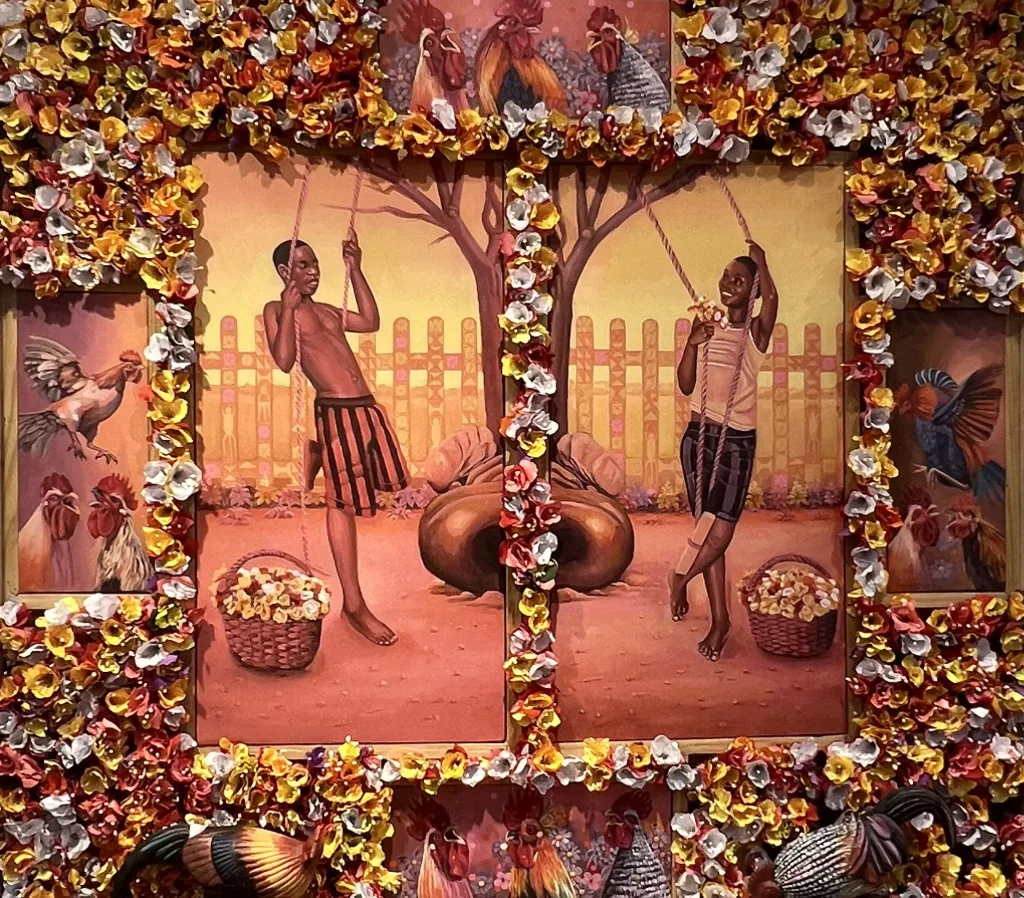
D.C: Is there a particular piece in the exhibition that you feel especially emotionally connected to?
E.I: Yes sure, I feel so much connection to the mixed media assemblage. It’s not just a painting; it’s a fusion of textile, sculpture, and texture. It’s a world within itself. There are about six different artworks embedded within the piece. I handcrafted all the flowers, they weren’t bought or assembled from elsewhere. Each one was made by hand. There’s also a sculptural element: chickens, which symbolize the passage of time. The flowers, on the other hand, represent past memories.
I chose a 3D format intentionally. I wanted viewers to experience the story beyond a flat surface and see it beyond the 2D format. It’s about immersing people in the narrative, not just showing it to them.
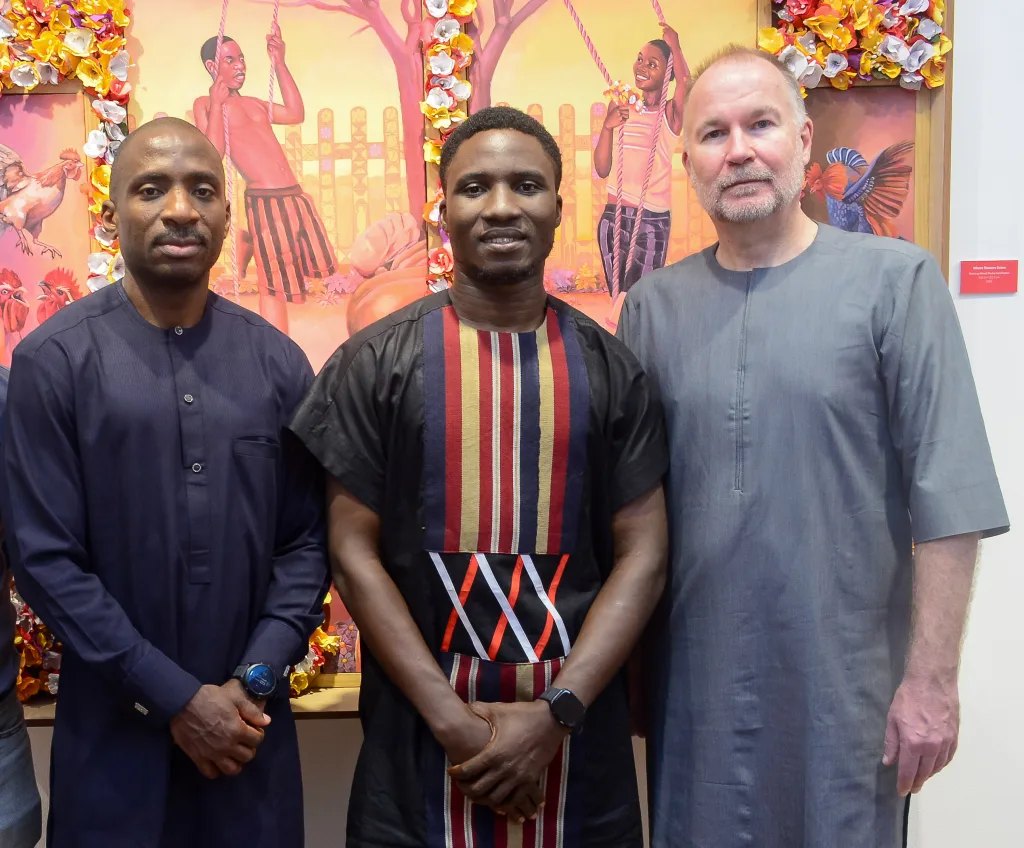
D.C: What are your future plans?
E.I: My future is in God’s hands. This feels like a sign-out moment with Absa, but I’m hopeful. I believe it’s the beginning of a new chapter and a stepping stone to even greater things.
